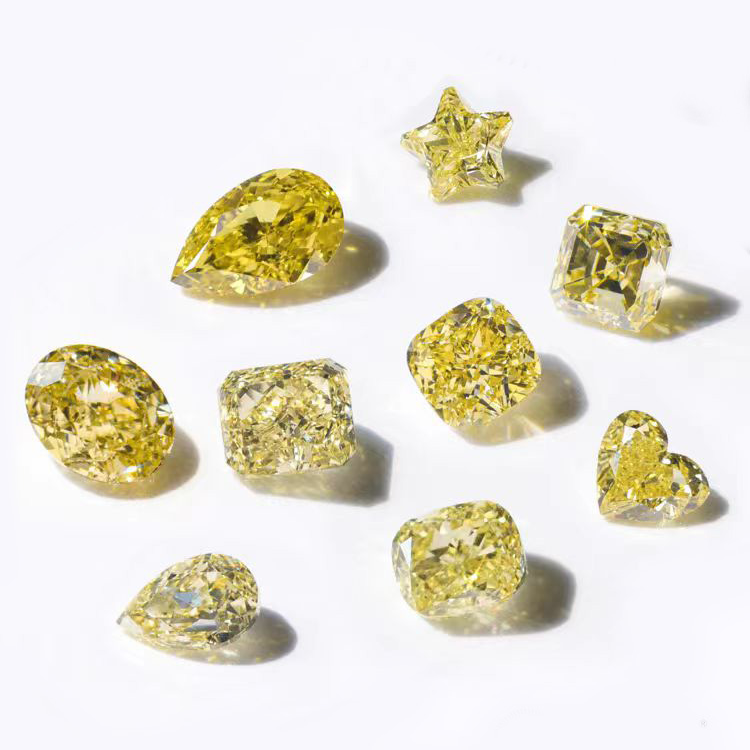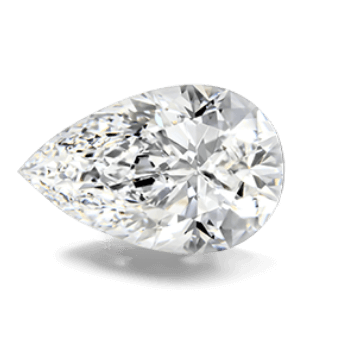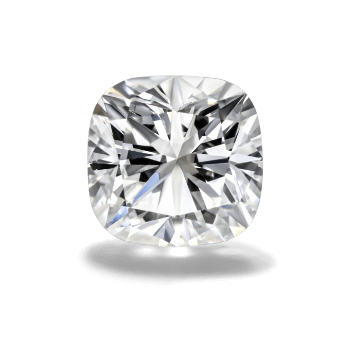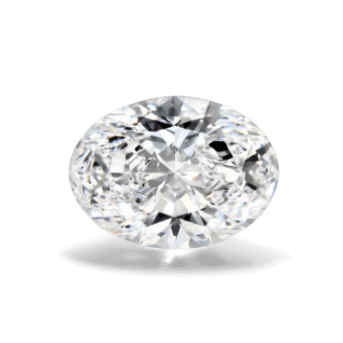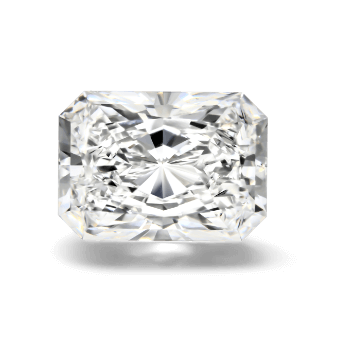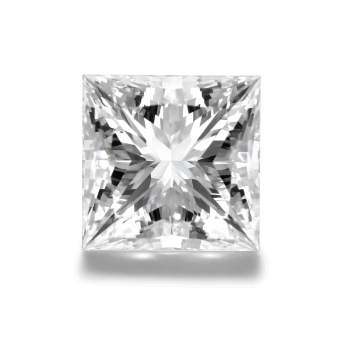FAQs About Diamond Shape
The best diamond shape is a subjective choice, as each shape has its own unique advantages and characteristics. Ultimately, the ideal diamond shape depends on personal preferences and the style that resonates most with the individual. Whether you prefer the classic brilliance of a round diamond, the vintage charm of a cushion cut, or the modern elegance of an emerald cut, the right shape is the one that best reflects your taste and personality.
Diamond shape is important because it significantly influences the overall appearance, style, and character of an engagement ring or other jewelry piece. The shape of a diamond affects how light interacts with the stone, impacting its brilliance and sparkle. For example, round diamonds are known for their exceptional fire and brilliance, while shapes like emerald or asscher cuts emphasize clarity and a sleek, elegant look.
Additionally, diamond shape plays a key role in the aesthetic appeal of the jewelry, complementing the wearer’s personal style and taste. It can also impact how large the diamond appears, its compatibility with various settings, and how it suits different hand shapes. Ultimately, choosing the right diamond shape ensures that the ring or jewelry piece aligns with the wearer’s vision and enhances the overall design.
Each diamond shape carries its own symbolism and can reflect different aspects of personality, style, and sentiment.Here’s a look at what some of the most popular diamond shapes symbolize:
Round: The most traditional and popular diamond shape, the round diamond symbolizes eternity,commitment, and enduring love. Its classic and timeless appeal makes it a universal symbol of romance.
Cushion: Known for its soft, rounded corners and vintage charm, the cushion cut symbolizesromance, warmth, and timeless beauty. It’s often associated with a sense of nostalgia and elegance.
Oval: The elongated shape of the oval diamond represents individuality and creativity. Itsunique silhouette also symbolizes harmony and a desire for a non-traditional yet elegant look.
Pear: The pear-shaped diamond, combining the round and marquise cuts, symbolizes uniqueness anda sense of adventure. It’s often chosen by those who value originality and a touch of glamour.
Heart: The heart-shaped diamond is the ultimate symbol of love and romance. Its shape directlyrepresents love, affection, and deep emotional connection, making it a popular choice for those who want toexpress their feelings boldly.
Radiant: The radiant cut, known for its brilliant sparkle and unique shape, symbolizes vibrancy,energy, and a zest for life. It’s often chosen by those who love to stand out and make a statement.
Princess: The princess cut, with its sharp, angular lines, represents modern elegance andsophistication. It’s often chosen by those who appreciate a blend of tradition and contemporary style.
Asscher: With its distinctive square shape and step-cut facets, the Asscher cut symbolizes ArtDeco elegance and a love for vintage aesthetics. It represents clarity of purpose and a deep appreciation forhistory.
Emerald: The emerald cut’s clean lines and step facets emphasize clarity and transparency,symbolizing honesty, purity, and refined sophistication. It’s often chosen by those who value understatedelegance.
Marquise: The marquise cut, with its elongated shape and pointed ends, symbolizes grandeur andopulence. It’s often associated with those who appreciate a dramatic, eye-catching style.
Each diamond shape offers a way to express personal style and the unique qualities of a relationship, making thechoice of shape a meaningful aspect of selecting a diamond.
Choosing a diamond shape involves considering several factors that align with personal style, preferences, and theoverall design of the ring or jewelry piece. Here’s a guide to help you make the best choice:
- Personal Style: Think about the style that resonates most with you or the wearer. If you prefer classic andtimeless designs, a round or princess cut might be ideal. For a vintage or romantic feel, consider a cushionor oval shape. If modern and sleek designs appeal to you, an emerald or radiant cut could be the perfectchoice.
- Finger Shape and Size: Different diamond shapes can complement various finger shapes and sizes. For example,elongated shapes like oval, pear, or marquise diamonds can make fingers appear longer and more slender,while round or square shapes can add a sense of balance to wider fingers.
- Brilliance and Sparkle: If maximum sparkle is a priority, consider a round brilliant cut, which is designedto reflect the most light. Other shapes like the princess, radiant, and cushion cuts also offer significantbrilliance. Shapes like emerald and asscher cuts, with their step facets, emphasize clarity and create adifferent type of sophisticated sparkle.
- Setting Compatibility: Consider how the diamond shape will interact with the chosen ring setting. Someshapes, like the round and princess cuts, are versatile and look great in almost any setting, while others,like the pear or cushion, may require special settings to protect their pointed ends.
- Symbolism: Each diamond shape carries its own symbolism, which can add personal meaning to the ring. Whetheryou’re drawn to the romantic symbolism of a heart-shaped diamond or the modern elegance of an emerald cut,choose a shape that resonates with the sentiment you wish to convey.
- Budget Considerations: Some diamond shapes may offer better value than others. For example, fancy shapeslike cushion, oval, and pear cuts can sometimes appear larger per carat than round diamonds and may be moreaffordable.
Ultimately, the best diamond shape is one that aligns with your personal taste, enhances the overall design of thering or jewelry piece, and holds special meaning for you or the wearer.
When it comes to visual size, certain diamond shapes can appear larger than others for the same carat weight. Hereare a few diamond shapes that typically look bigger compared to their carat size:
Cushion: Although not as elongated as the oval or marquise, the cushion cut's square orrectangular shape can also make it look larger compared to round diamonds of the same carat weight, due to itsbroader surface area.
Oval: The elongated shape of an oval diamond can make it appear larger than other shapes of thesame carat weight. The way it spreads out can create the illusion of a bigger stone.
Pear: Similar to the oval cut, the pear-shaped diamond's elongated and tapered form can make itlook larger. Its unique shape maximizes the surface area, enhancing its visual size.
Emerald: The emerald cut’s long, rectangular facets create an illusion of size by emphasizinglength over width. This can make the diamond appear larger than round cuts of the same carat weight.
Marquise: The marquise cut has an elongated shape with pointed ends, which can make the diamondlook larger than its carat weight. The length of the marquise cut gives it a larger appearance.
While these shapes can make a diamond appear larger, it’s important to consider how the shape affects the overallaesthetics and setting of the ring.
The shape of a diamond significantly impacts how its size is perceived. Different shapes can make a diamond appearlarger or smaller relative to its actual carat weight. Here’s how various diamond shapes affect their perceivedsize:
Cushion: The cushion cut's square or rectangular shape, with its broad surface area, can make itlook larger compared to round diamonds of the same carat weight. Its facets enhance its visual impact.
Oval: The oval shape has an elongated form that maximizes surface area, making it appear largerthan round diamonds of the same carat weight. Its length can give the illusion of a bigger stone.
Pear: Similar to the oval, the pear shape’s elongated, teardrop form can make the diamond looklarger. The shape spreads the light across a larger area, enhancing its visual size.
Emerald: The emerald cut’s rectangular shape and long, linear facets emphasize length overwidth, which can make the diamond look larger than round diamonds of the same carat weight. This elongationcreates a sense of size without increasing carat weight.
Round: While the round brilliant cut is known for its exceptional sparkle, it tends to have amore compact appearance compared to elongated or square shapes. For the same carat weight, a round diamondgenerally appears smaller than elongated shapes like oval or marquise.
In summary, the shape of a diamond influences its perceived size by affecting the visual distribution of light andthe overall surface area. Elongated shapes tend to make diamonds look larger, while shapes with more compact formsmay appear smaller.
